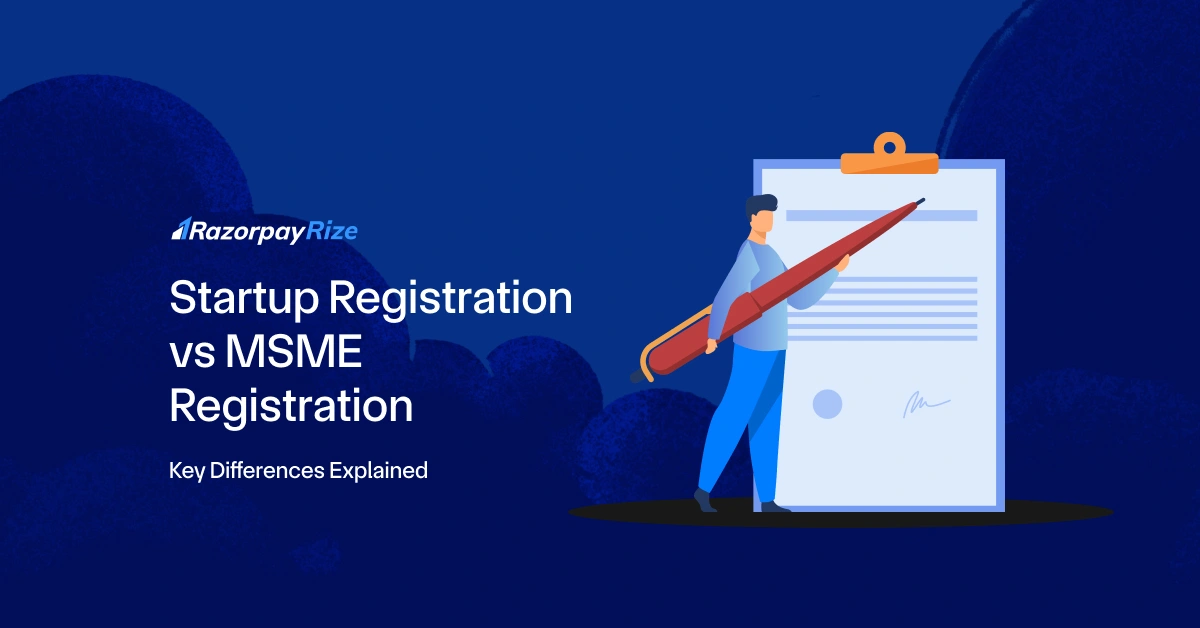As Indian businesses evolve, many traditional partnership firms are transitioning into Limited Liability Partnerships (LLPs). This shift is primarily due to LLPs offering the dual benefits of limited liability and flexible management. If you’re running a partnership firm and planning to scale or raise capital, converting into an LLP could provide a more secure and growth-friendly structure.
This blog walks you through the key differences, reasons for conversion, and the step-by-step process involved.
Table of Contents
Partnership vs LLP
Why Choose LLP Instead of a Partnership Firm?
- Limited Liability: Unlike partnership firms, LLPs protect the personal assets of partners.
- Separate Legal Identity: An LLP can own property, sue, and be sued in its own name.
- Ease of Ownership Transfer: Ownership and management can be easily transferred.
- Tax Benefits: LLPs are taxed as partnerships but enjoy exemption from dividend distribution tax (DDT).
- Investor Friendly: LLPs are seen as more credible and structured by banks and investors.
- Perpetual Existence: Business continuity is not affected by partner exit or death.
Requirements for Converting a Partnership Firm into an LLP
- The partnership firm must be registered under the Indian Partnership Act, 1932.
- All partners must consent to the conversion.
- There should be no security interest (like a charge) on firm assets at the time of conversion.
- All partners of the firm must become partners of the LLP.
- Digital Signature Certificates (DSC) and Director Identification Numbers (DIN) for designated partners are mandatory.
- The firm must comply with all necessary clearances and approvals (if any) before the conversion.
Ready to upgrade your partnership? Start your LLP registration with expert assistance today.
How do you convert a partnership firm into an LLP?
Here’s the step-by-step process:
Step 1: Obtain DSC & DIN
At least two designated partners need DSCs, which can be applied for in the FiLLiP form.
Step 2: Name Reservation (RUN–LLP)
To reserve the name, file the “Reserve Unique Name–LLP” (RUN–LLP) form with the MCA. It should ideally be the same as the partnership firm’s name.
Step 3: File Form FiLLiP
File Form FiLLiP (Form for Incorporation of LLP) with all partner details, registered address, and capital structure. This form can also be used to apply for DIN.
Step 4: File LLP Form 17 (Conversion Form)
This is the key form for conversion. It must be filed with all supporting documents (listed below) and submitted to the MCA.
Step 5: File LLP Form 2
Submit the incorporation document and subscriber details, including the proposed LLP Agreement.
Step 6: Certificate of Incorporation
Once all forms are verified and approved, the Registrar of Companies (RoC) will issue a Certificate of Incorporation for the LLP.
Documents to be Filed
- Copy of the partnership deed
- Statement of assets and liabilities (certified by a CA)
- Latest Income Tax Return acknowledgement
- Consent letters from all partners
- NOC from creditors, if applicable
- Proof of registered office (rent agreement + utility bill)
- Identity and address proof of all partners
- Copy of resolution (if applicable)
- LLP Agreement (after incorporation)
Registration
Registration is completed once the Certificate of Incorporation is issued by the RoC under the LLP Act, 2008. This certificate legally establishes the LLP as a distinct entity.
The firm must also:
- Apply for PAN & TAN in the LLP’s name.
- Update bank accounts and register under GST, Shops & Establishment, etc.
- File Form 3 with the MCA within 30 days to register the LLP Agreement.
Post-registration:
- The original partnership firm is deemed dissolved.
- All assets, liabilities, obligations, and rights of the firm get transferred to the LLP.
- All contracts and agreements entered into by the partnership firm are considered valid under the LLP.
- Business continuity is maintained under the new structure.
Partners' Liability Before Conversion
It’s important to note:
- Partners remain personally liable for all firm obligations and liabilities incurred before conversion.
- The LLP is not discharged from any previous liability just because of the conversion.
- Creditors can enforce pre-conversion obligations against the LLP or partners individually, depending on the terms.
LLP Form No. 17
LLP Form 17 is an important conversion form to be submitted during the process. It includes:
- Declaration by partners
- Statement of assets and liabilities
- Consent of all partners
- Details of all secured creditors and their NOC
- Copy of the latest ITR
- Copy of the partnership deed
The form must be digitally signed and submitted with a prescribed fee.
Part A: Application
- Name and registration details of the existing firm
- Proposed name of the LLP
- Details of all partners (name, PAN, address)
- Statement of consent from partners
- Statement of financial position of the firm
Part B: Statement
- Statement confirming that the partners will be part of the LLP
- Declaration that all regulatory and tax obligations have been complied with
- Acknowledgement of previous liabilities
Attachments
- Consent letters from all partners
- NOC from creditors
- Copy of PAN and Aadhaar of partners
- Copy of the partnership deed
- Digital signatures of partners
- Latest IT return
- Rental agreement and utility bill for registered office
- LLP Agreement (to be filed within 30 days of incorporation)
Frequently Asked Questions (FAQs)
Private Limited Company
(Pvt. Ltd.)
- Service-based businesses
- Businesses looking to issue shares
- Businesses seeking investment through equity-based funding
Limited Liability Partnership
(LLP)
- Professional services
- Firms seeking any capital contribution from Partners
- Firms sharing resources with limited liability
One Person Company
(OPC)
- Freelancers, Small-scale businesses
- Businesses looking for minimal compliance
- Businesses looking for single-ownership
Private Limited Company
(Pvt. Ltd.)
- Service-based businesses
- Businesses looking to issue shares
- Businesses seeking investment through equity-based funding
One Person Company
(OPC)
- Freelancers, Small-scale businesses
- Businesses looking for minimal compliance
- Businesses looking for single-ownership
Private Limited Company
(Pvt. Ltd.)
- Service-based businesses
- Businesses looking to issue shares
- Businesses seeking investment through equity-based funding
Limited Liability Partnership
(LLP)
- Professional services
- Firms seeking any capital contribution from Partners
- Firms sharing resources with limited liability
Frequently Asked Questions
Why should I convert my partnership firm into an LLP?
Converting into an LLP offers several benefits:
- Limited Liability
- Separate Legal Entity
- Perpetual Succession
- Increased Credibility
- Ease of Compliance
Is it mandatory to convert a partnership firm into an LLP?
No, it is not mandatory. Conversion is voluntary and usually done when the partners want to enjoy the benefits of limited liability and a formal structure without the complexity of incorporating a company.
Do all partners need to agree to the conversion?
Yes, all existing partners must unanimously agree to the conversion. Also, only the existing partners of the firm can become partners in the LLP at the time of conversion- no new partners can be added during this process.
Is there any limit on the number of partners in an LLP?
No, there is no upper limit on the number of partners in an LLP. However, a minimum of two partners is required to form an LLP. Unlike traditional partnership firms (which are capped at 50 partners).
Do I need to obtain a new PAN for the LLP after conversion?
Yes, after conversion, the LLP becomes a separate legal entity, so you must apply for a new PAN and TAN in the name of the LLP. You’ll also need to update other registrations (like GST, Shops & Establishments, bank accounts, etc.) to reflect the new entity.
















